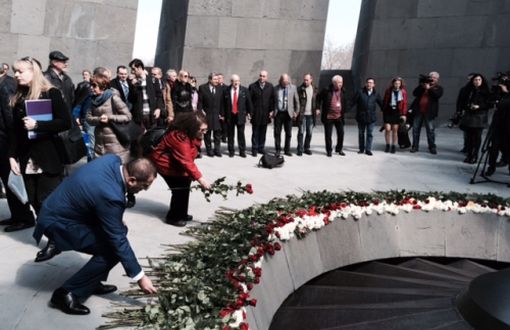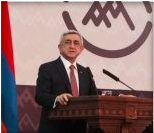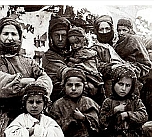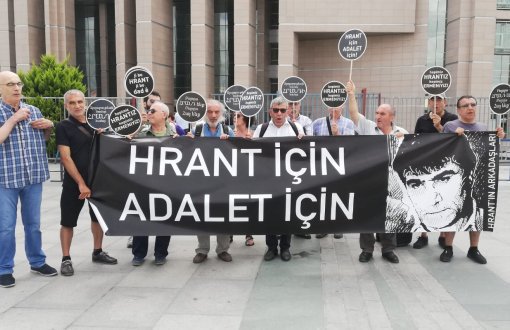Speaking on the second day of “At the Foot of Ararat” International Media Forum in Yerevan, Dr. Hayk Demoyan, Armenian Genocide Museum-Institute Director, informed participants on their agenda for the 100th anniversary commemorations.

Demoyan announced that around 200 academicians worldwide with a specialty on genocide are expected to visit the museum while there will be 34 exhibitions around the world.
“For me, the most dramatic story about the Genocide is my family’s. My grandmother’s. I remember her telling me about the story over and over when I was 7 or 8 years old,” he said.
“My grandma was born in Kars in 1902. She was subjected to deportation twice, first at the ago of 10 and second at age of 12.
“When she died in 1992, I was 16. But I remember her crying in her sleep. ‘Turks are coming’, ‘Run away’, she would scream. She recited these for two months before her death.
“When the genocide targets one group, memory disappears as well,” continued Dr. Demoyan. Though he added that they have found countless documents, stories and photos related to the genocide all over the world.
The Genocide Museum encompasses over 8,000 data in written, visual and audio formats. It also migrates its archives to digital platform.
Journalists visiting Yerevan with the Media Forum program has been to the Genocide Memorial and commemorated the victims after the museum. (EA/BM)
About Armenian Genocide Museum The Armenian Genocide Museum opened its doors in 1995, concurrently commemorating the eightieth anniversary of the Genocide. The Museum structure, planned by architects S. Kalashian, A. Tarkhanyan and sculptor F. Araqelyan, has a unique design. During the decennial activity the Museum received many visitors including schoolchildren, college students and an unprecedented number of tourists both local and abroad. The museum provides guided tours in Armenian, Russian, English, French and German. The Republic of Armenia has made visiting the Armenian Genocide Museum part of the official State protocol and many foreign official delegations have already visited the Museum. These delegations have included, Pope John Paul II, President of the Russian Federation V. Putin, President of the Republic of France J. Shirak, and other well-known social and political figures. The impressive two-story building is built directly into the side of a hill so as not to detract from the imposing presence of the Genocide Monument nearby. The roof of the Museum is flat and covered with concrete tiles. It overlooks the scenic Ararat Valley and majestic Mount Ararat. * Click here for more information on the museum. |
* Click here to read the article in Turkish.












.jpg)
.jpg)